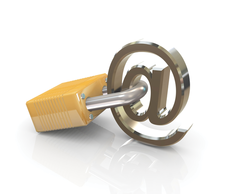Social networking the FOSS way
The Email Upgrade

© Lead Image © nasirkhan, 123RF.com
Forget email: Bitmessage harnesses the power of public key cryptography to create a decentralized, trustless P2P communications protocol. Messages are virtually impossible to spoof or tap.
Users of the pseudonymous cryptocurrency Bitcoin will know that its strength lies in a blockchain – a decentralized ledger of transactions shared across thousands of computers. Since transactions are confirmed several times, it is highly unfeasible for anyone to forge an entry in the blockchain to give themselves a digital wagonload of Bitcoins. Nor is it very easy to steal coins from another user's digital wallet without their digital private key [1].
Like Bitcoin, Bitmessage uses a decentralized peer-to-peer (P2P) protocol. Instead of using a blockchain to record transactions, however, Bitmessage uses complex mathematics to validate and encrypt messages. In simplest terms Bitmessage works as a vast e-mail server, albeit one that is not controlled from any one central point [2].
Developer Jonathan Warren's official whitepaper on Bitmessage [3] goes into considerable detail on how this is achieved. As an average Linux user, it's sufficient to know that each user is assigned a virtual "address" (e.g., BM-2cSpVFB6cDxLLGUeLRy3pZTwYsujmpRzP7) that can be used to send and receive messages. Bitmessage users can have one or a number of these addresses (Figure 1).
[...]
Buy this article as PDF
(incl. VAT)
Buy Linux Magazine
Subscribe to our Linux Newsletters
Find Linux and Open Source Jobs
Subscribe to our ADMIN Newsletters
Support Our Work
Linux Magazine content is made possible with support from readers like you. Please consider contributing when you’ve found an article to be beneficial.

News
-
Mozilla Plans to AI-ify Firefox
With a new CEO in control, Mozilla is doubling down on a strategy of trust, all the while leaning into AI.
-
Gnome Says No to AI-Generated Extensions
If you're a developer wanting to create a new Gnome extension, you'd best set aside that AI code generator, because the extension team will have none of that.
-
Parrot OS Switches to KDE Plasma Desktop
Yet another distro is making the move to the KDE Plasma desktop.
-
TUXEDO Announces Gemini 17
TUXEDO Computers has released the fourth generation of its Gemini laptop with plenty of updates.
-
Two New Distros Adopt Enlightenment
MX Moksha and AV Linux 25 join ranks with Bodhi Linux and embrace the Enlightenment desktop.
-
Solus Linux 4.8 Removes Python 2
Solus Linux 4.8 has been released with the latest Linux kernel, updated desktops, and a key removal.
-
Zorin OS 18 Hits over a Million Downloads
If you doubt Linux isn't gaining popularity, you only have to look at Zorin OS's download numbers.
-
TUXEDO Computers Scraps Snapdragon X1E-Based Laptop
Due to issues with a Snapdragon CPU, TUXEDO Computers has cancelled its plans to release a laptop based on this elite hardware.
-
Debian Unleashes Debian Libre Live
Debian Libre Live keeps your machine free of proprietary software.
-
Valve Announces Pending Release of Steam Machine
Shout it to the heavens: Steam Machine, powered by Linux, is set to arrive in 2026.

